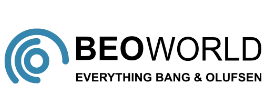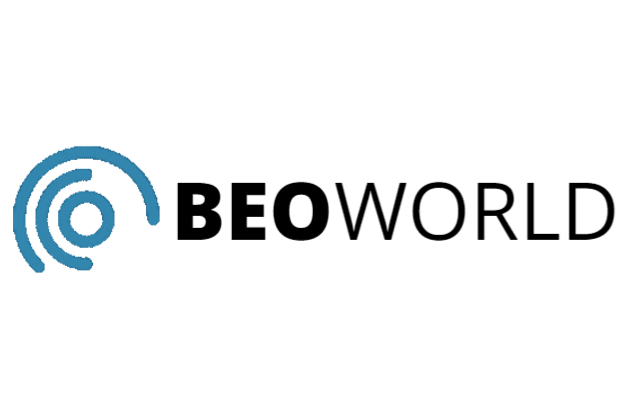Author: Multicare
BeoMaster 6500
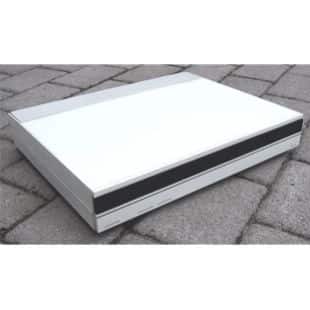
BeoMaster 6500
In part a powerful receiver for FM/AM and LW broadcast bands. In part the control centre that created the connection between your commands and all the sound sources in Beosystem 6500. You could preset up to 20 stations and a light touch on the Master Control Panel automatically initiated the search and fine tuning functions.
2 x 110 watts/8 ohms output gave you a power surplus that provided a detailed sound picture even at low volume. The receiver also had Bang & Olufsen’s automatic power handling control that prevented overloading no matter how many loudspeakers you connected. It also had a newly-designed socket which provided optimal utilisation of BeoLab speakers.
Beomaster 6500 could be used as part of the Beosystem 6500 hi-fi system and could be controlled with with the Master Control Panel 6500 or Beolink 7000.
BeoMaster 6500 Product Details
Type Numbers
2336 (1989 - Dec 1991)
2340 (AUS) (1989 - Sept 1991)
2337 (GB) (1989 - Oct 1991)
2339 (J) (1989 - Oct 1991)
2338 (US) (1989 - Sept 1991)
Designer
Manufactured
1989 - 1991
Colour Options
Polished aluminium, White
BeoMaster 6500 Product Specification
Long-term max. output power IEC: 2 x 110 W / 8 ohms
Total harmonic distortion IHF: < 0.09 % / 50 W 20 – 20,000 Hz
Intermodulation: < 0.1 %
Bass control at 40 Hz:: +/- 10 dB
Treble control at 12.500 Hz: +/- 8 dB
FM range:
76 – 90 MHZ (Type 2339)
87.5 – 108 MHz (Types 2336, 2337, 2338, 2340)
AM tuner section
LW range: 150 – 350 KHz (Type 2336, 2337)
MW range: 520 – 1610 KHz (2336, 2337, 2338, 2339, 2340)
Power supply:
2336 220V
2337 240V
2338 120V
2339 100V
2340 240V
Power consumption: max. 225 W
Dimensions W x H x D: 42 x 7.5 x 32.5cm
Weight: 8.5 kg
RIAA amplifier built-in (8001245)
Connections: Audio Link CD, Tape1, Tape2, PH (RIAA in Beogram 6500)
Audio AUX Link Beovision, 7 pin
Power Link BeoLab speakers, 2 sockets 8-pin
Speaker Link Beovox speakers, 2 sockets 4-pin
Master Control Link: 2 sockets 3-pin
Headphones: max 10 V/470 ohms
Link compatibility: Master Control Link
Gold or Silver membership required to view documents
Available documents are listed, if none are listed then please reach out to see if we have them.
BeoMaster 6500 FAQs
Please let us know
BeoMaster 700
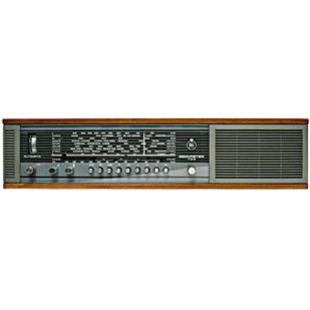
BeoMaster 700
BeoMaster 700 Product Details
Type Numbers
Please let us know
Designer
Manufactured
1965 - 1969
Colour Options
Rosewood, Teak
BeoMaster 700 Product Specification
Please let us know
Gold or Silver membership required to view documents
Available documents are listed, if none are listed then please reach out to see if we have them.
BeoMaster 700 FAQs
Please let us know
BeoMaster 7000
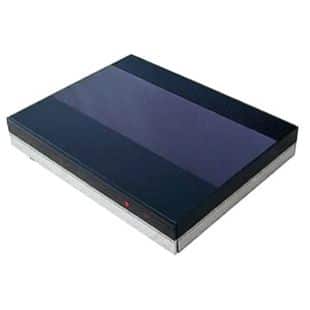
BeoMaster 7000
Beomaster 7000 was a receiver of high specifications and contained the system infra-red transceiver for communication with Beolink 7000 and the necessary computer to process and relay the commands to the other sources. Beomaster 7000 was the audio master and as such defined the system. Besides being a computer with considerable processing power, Beomaster 7000 also contained an FM/AM radio, the switch circuitry and the control- and power-amplifier.
Features:
Radio:
FM/AM frequency synthesis tuner, 24 presets. RDS decoder with access to FM transmitter name and operator. Naming of individual stations, both FM and AM, up to ten characters per station.
Amplifier Control section:
2 x 110 Watts long-term maximum output power. Automatic Power Handling Control, speaker and amplifier protection. Power Link connection for BeoLab active loudspeakers. Speaker Link connection for other loudspeakers (two pairs).
Connection for external power amplifier. Beolink® AV connection and complete AV operation facilities. Connection for Local Control System.
Audio Master:
Microcomputer, ROM capacity 64 KB, RAM capacity 1 KB, for the control of e.g. adjustments, source switching (audio and video), Automatic Power Handling Control, tuning, timer programming etc. Timer programming, 10 timer blocks. Battery backup for timer and clock. Dynamic display readout on Beolink 7000 of frequency, RDS and naming data, all tuning data, preset, FM/AM, sound adjustments.
Beomaster 7000 had a built-in RDS decoder which gave access to the basic 8 character RDS readout, the “PS” or “Programme Service Name”, i.e. an abbreviated readout of the transmitter name, the programme number and perhaps the name of the operator. The RDS data was displayed directly on Beolink 7000, when you selected a station that broadcast RDS information. This applied both when you were tuning or when you selected the preset that you had stored the programme on. Beolink 7000 displayed the RDS data also in situations when you were in a room equipped with Local Control System. Beolink 7000 was the only remote control capable of displaying RDS data.
The channel-naming facility allowed you to give every single radio station a name of your choice, with up to 10 characters, directly on the Beolink 7000. Naming could be carried out on all preset stations. Your favourite name had priority over a RDS name (if available) and was displayed when you selected the channel number.
The RDS and naming facility gave an added convenience with radio reception. The convenience level was paralleled with the reception quality of the FM tuner.
An FM tuner faces conflicting demands with regard to signal reception. It must have a high sensitivity for receiving weak stations (high selectivity), but it must also be able to suppress interference from powerful neighbouring stations. Beomaster 7000 was one of the few receivers that paid attention to these conflicting demands.
Components in high quality (e.g. dual-gate MOSFET transistors) and an optimised electronic design were used. The Intermediate Frequency (IF) stage had a bandwidth of approximately 200 kHz around the 10,7 MHz centre frequency (the IF filter contained three stable ceramic filters). Generally, if the IF bandwidth is broad, the selectivity falls, as does the intermodulation distortion. Conversely, if the bandwidth is narrow, the distortion and selectivity rise. This relationship must be compared with the reception conditions. If stations are close by (and powerful), the ideal is a narrow bandwidth, while distant (weak) stations require a wider band, in order to keep down the intermodulation distortion. In Beomaster 7000 the signal strength was measured for both the stations you received (within the filter range) and for stations that you didn’t want to receive, outside the filter range. This allowed Bang & Olufsen to suppress powerful stations on neighbouring frequencies and counteract intermodulation distortion, giving a high signal-to-noise characteristic for both weak and strong stations.
The stereo decoder gave an optimal stereo channel separation as long as the signal-to-noise ratio in the received signal was above 50 dB. When weaker signals were received, Beomaster 7000 automatically switched to mono. You could also select mono manually.
Tuning
The tuner was of the frequency-synthesis type, based on digital technology and controlled by the microcomputer. Tuning on FM was in steps of 50 kHz, in order to adhere to the cable network frequency allocation of 50 kHz. Tuning was carried out from Beolink 7000, either as a search tune up or down in the frequency range, or by direct frequency selection. There was automatic or manual fine-tune, with a precision better than 1 kHz.
AM Tuner
The (then) newly-developed AM tuner had a high reception sensitivity and was very stable and reliable. It was optimised for the Bang & Olufsen loop antenna, type no. 8720038. Automatic tuning was in steps of 9 kHz (USA: 10 kHz). The fine-tune operated in steps of 0.25 kHz.
Presets
24 presets were available. You could store any FM or AM station in any order and information such as fine tune, FM stereo/mono and AM manual tune was stored on the preset.
The Power Amplifier
The power amplifier in Beomaster 7000 was rated at 2 x 110 watts long term max. output, and it featured Automatic Power Handling Control as a protection for both the loudspeakers and the amplifier in case of overload or shorting. The circuit monitored the critical stage in the output amplifier and if prescribed limits were exceeded, the microcomputer lowered the volume to below the critical level.
The temperatures of the cooling surfaces were also measured and if the temperature got too high, the volume was also cut down. If the limits were exceeded again, the procedure was repeated. If the cause of the overload was eliminated, the volume could be turned up above the previous critical level. You would only under very special circumstances experience the Automatic Power Handling Control’s circuit overruling your volume setting, but when it did, it could save the system from serious damage. The circuit might have been activated, for example, if you connected several pairs of normal loudspeakers and played very powerful music extremely loudly. Another example could be if the loudspeaker outputs were short-circuited, in which case the Beomaster was simply switched to stand-by to protect the amplifier in an effective way. Similarly, if a defect occurred in the amplifier, the circuit protected the loudspeaker against direct current, which would otherwise destroy them.
If you connected BeoLab Penta or other active BeoLab speakers via the Power Link sockets, there was an independent protection circuit in the loudspeakers to protect them in a similar way.
Active cooling
Beomaster 7000 was very compact and in order to liberate heat from the power amplifier efficiently, a low-noise fan was placed at the bottom of the cabinet. If the cooling ribs of the output transistors reach a temperature of more than 50 degrees, the fan started up at low speed, rising to a maximum speed when the temperature was around 95 degrees. The amount of heat generated by the amplifier depended on how loud you played and for how long a period the volume was turned up. Only by playing very loudly for a prolonged time would the temperature rise and the fan start up, or the Automatic Power Handling Control interfere. Note also that if the recommended BeoLab Penta loudspeakers were connected, the power amplifier in Beomaster 70000 became inactive (or perhaps used to drive a Local Control System).
PowerLink Connection
The PowerLink connection in the receiver was used to connect BeoLab active speakers. The signal is a volume-adjusted line level signal and both left and right signals are carried in one cable, with data signals for a BeoLab status display. This means that it is no longer the socket on the Beomaster that decides whether it is the left or right channel. Instead a switch on the BeoLab loudspeaker has to be set to the correct position. PowerLink is very flexible with regard to connections. A pair of loudspeakers can be connected the usual way, with one cable to each loudspeaker, a BUS system can be applied where the signal is looped through one of the loudspeakers and then on to the next, or both methods may be combined if more than one pair of speakers needs to be connected. No matter which method is used, the correct setting of the L – R switch on the loudspeaker is essential. Up to 10 pairs and 100 metres of Power Link cable is recommended.
Socket Panel
The socket panel on the back of Beomaster 7000 was placed in a cut-out to prevent the connectors from protruding too far. As a consequence, the effective depth of Beosystem 7000 was virtually the same as the actual depth of the components. Apart from the CD, Tape 1, Tape 2, Phono and PowerLink sockets there were also connections for TV (or AUX), 2 pairs of Speaker Link for normal loudspeakers and Local Control System, FM/AM antenna sockets and a Line in/out socket for an external unit, e.g. an equaliser.
Note that the RIAA phono-preamplifier was placed in the Beogram 7000 and if a Beogram without RIAA was to be connected, a RIAA kit must be mounted in Beomaster 7000 by means of a minor service operation.
The battery backup in Beomaster 7000 retained all information in case of a power cut, where a quartz crystal was used as a reference for the clock.
Beomaster 7000 could, ideally, be used as part of Beosystem 7000.
BeoMaster 7000 Product Details
Type Numbers
2341 (1992 - May 1996)
2345 (AUS) (1992 - Feb 1995)
2342 (GB) (1992 - Feb 1996)
2344 (J) (1992 - Dec 1995)
2343 (USA) (1992 - July 1996)
Designer
Manufactured
1992 - 1995
Colour Options
Aluminium, Black, White
BeoMaster 7000 Product Specification
Long-term max output power IEC: 2 x 110 W / 8 ohms
Total harmonic distortion IHF: < 0.09 % / 50 W 20 – 20,000 Hz
Intermodulation < 0.1 %
Power supply:
2341: 220 V
2342: 240 V
2343: 120 V
2344: 100 V
2345: 240 V
Bass control at 40 Hz: +/- 10 dB
Treble control at 12.500 Hz: +/- 8 dB
Power consumption: max. 225 W
Dimensions W x H x D: 42 x 7.5 x 32.5cm
Weight: 8.5 kg
RIAA amplifier: built-in (8001245)
Connections: Audio Link CD, Tape1, Tape2, PH (RIAA in Beogram 6500)
Audio AUX Link Beovision, 7 pin
Power Link BeoLab speakers, 2 sockets 8-pin
Speaker Link Beovox speakers, 2 sockets 4-pin
Master Control Link 2 sockets 3-pin
Headphones Mac 10 V/470 ohms
Link compatibility: Master Control Link
Gold or Silver membership required to view documents
Available documents are listed, if none are listed then please reach out to see if we have them.
Type | Language | Type Number | Date | Type | |
Service Manual | EN | 2341, 2342, 2343, 2344, 2345 | 10-91 | BeoMaster 7000 Service Manual |
BeoMaster 7000 FAQs
Please let us know
BeoMaster 800

BeoMaster 800
BeoMaster 800 Product Details
Type Numbers
2601 (1972 - May 1974)
Designer
Manufactured
1972 - 1974
Colour Options
Rosewood, Teak
BeoMaster 800 Product Specification
Power output 2 x 20 W / 8 ohms
2 x 19 W / 4 ohms
2 x 40 W / 8 ohms
2 x 25 W / 4 ohms
Speaker impedance: 4 ohms
Harmonic distortion: < 0.1 %
Intermodulation: < 1.0 %
Frequency Response: 20 – 30000 Hz
Signal-to-noise ratio: > 50 dB
Channel separation: > 50 dB
Bass control: +/- 17 dB
Treble control +/- 14 dB
FM tuner: range 87.5 – 104 MHz
AM tuner:
147 – 350 kHz
520 – 1610 kHz
Power supply:: 110 – 130 – 220 – 240 V; 50 – 60 Hz
Power consumption:15 – 120 W
Dimensions W x H x D: 7.5 x 50 x 22.8cm
Weight: 5.5 kg
Connections: Tape DIN
Phono: DIN
Speakers: 1 set
Gold or Silver membership required to view documents
Available documents are listed, if none are listed then please reach out to see if we have them.
BeoMaster 800 FAQs
Please let us know
BeoMaster 900M
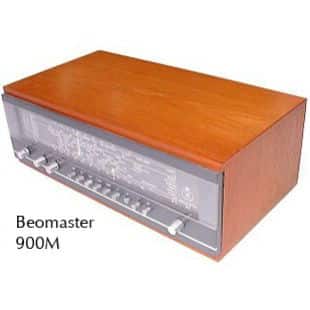
BeoMaster 900M
The first product of the new era was launched in 1964.
Beomaster 900 was a fully transistorised radio with FM stereo radio. It was even launched in a version with two built-in speakers – Beomaster 900K – making it clear to everyone that it contained two independent stereo loudspeakers. Bang & Olufsen wanted to design a product so unique that it would open the doors to distribution throughout Europe, in the same way as the “Five Lamper” had done in Denmark 30 years earlier .Beomaster 900M
This version of the Beomaster 900 was developed specially for those who require a set for use with external speakers. Otherwise, the Beomaster 900M is identical with the Beomaster 900K. Dimensions: 146mm high, 404mm wide, 230mm deep. Choice of teak or Brazilian rosewood finish.” – taken form the Bang & Olufsen product catalogue 1967 – 68The most remarkable aspect, however, was not in the technology, but in the design. Transistors, which are small compared to radio tubes, generate less heat. As they require less space to release heat, transistors allow for radically different cabinet designs. The architect and designer, Henning Moldenhawer, knew how to exploit this. He designed the world’s first low, flat radio cabinet, creating a radical innovation in the process. From practically one day to the next, the good old tube equipped radio had become obsolete. Now it was transistors, not tubes, which for the first time would be powered from the mains. While the sound was improved, the loudspeakers also underwent significant changes, becoming more compact. After all, in those days, loudspeakers were foreign elements in the living-room. This was achieved with the pressure chamber loud speaker which reproduced sound of a quality which had, until then, only been possible with far bigger boxes. A long, low and fully transistorised mains radio, which played immediately – with no warm-up necessary, as was the case with the radio tubes – was an achievement in itself. In addition, the design concept challenged all established ideas for radio design. The new Beomaster 900 marked a revolution. It was the architect Henning Moldenhawer who, for the first time in the history of radio, extended the front all the way out to the sides of the unit, breaking with the traditional framing of the front which all radios, TVs and loudspeakers had been using until then. This motif was retraced in Bang & Olufsen’s future design language. It was even repeated graphically in the company’s advertisements. Beomaster 900 became a European-wide success. At the same time – and much to the company’s surprise – its share of the Danish market did not fall. On the contrary, it rose significantly – at a time when the last of the remaining Danish manufacturers went to the wall. Proof indeed that design is not only for connoisseurs, but is a universal language, at least when applied with talent and as an expression of the product’s conceptual content, i.e. making the product itself a communicator. When, some years later, Bang & Olufsen explained its identity, this visually self-communicating aspect was dubbed ‘Autovisuality’. Concept communication in terms of what the unit is and can do, communication between the unit and the user, but also identity communication between those who create the products and those who select and acquire them as well as between those who own the products. ” Beomaster 900K: This all-transistor mains-powered stereo radio will revolutionise your ideas about radio and was awarded the iF prize at the International Hanover Fair. The Beomaster 900K is an all-transistor mains-powered stereo radio featuring a specially engineered highly-efficient dual-channel audio amplifier for reproduction of stereo gramophone records (delivers 2 x 5 watts of undistorted power output). It is prepared for single transmitter stereo broadcasts, having a B&O multiplex adaptor (stereo decoder). A Beo-Beacon pilot lamp lights up when the receiver is tuned to a station transmitting an FM stereo programme or when the receiver is switched to play stereo gramophone records or stereo tapes. The Beomaster 900K has two B&O pressure-chamber speakers. Dimensions: 146mm high, 744mm wide, 230mm deep)
BeoMaster 900M Product Details
Type Numbers
Please let us know
Designer
Manufactured
1964 - 1970
Colour Options
Rosewood, Teak
BeoMaster 900M Product Specification
Please let us know
Gold or Silver membership required to view documents
Available documents are listed, if none are listed then please reach out to see if we have them.
BeoMaster 900M FAQs
Please let us know
BeoMaster 8000

BeoMaster 8000
The radio section united the principle of the modern digital frequency synthesizer tuner with a precise, automatic fine-tuning system to give unparalleled accuracy and long-term stability of reception. The set’s control panel gave instant access to all sound sources – an associated record deck and two tape decks and any of 9 user-programmable FM stations. The visual feedback indicated which sources were playing and their volume settings. Controls for secondary functions were protected beneath a hinged lid.
The infra-red BeoLab Terminal was for its time, complex technology tamed. It gave easy, direct access to music and allowed the control of a musical experience from anywhere in your room and operate Beogram 8002 and Beocord 8004 if these were part of your system. A single touch is all there was between what you wanted and the fulfilment of your wish. Radio programmes, cassettes and records were all available at the touch of a button.
In the early 1980s the technical quality of records, tapes and FM transmissions was vastly improved. Improvement meant increased dynamic range.
Increased dynamic range in sound sources makes great demands on hi-fi components. They must accommodate a greater range of tones: from the very faintest tinkle of a triangle to the loudest roll of the bass drum; and reproduce each tone accurately. This requires powerful, serious hi-fi components. Power to accommodate the dynamics, and accuracy to ensure that the fundamentals and harmonics of each tone are reproduced faithfully, i.e. with the intervals and relative intensity that gives each instrument its characteristic quality.
The 2 x 150 watts RMS Beomaster 8000 high fidelity FM receiver had the power, precision and overall performance level to help you achieve this goal. Up to the time of its introduction, it was Bang & Olufsen’s most accomplished receiver to date. During its construction phase, the company focused on one major goal: that none of its circuits or components should be able to limit or distort the sound signals it received before the amplifier’s power output level was exhausted.
In accordance with this, a special circuit registered, and the “clipping” function indicated when you should regulate volume level, if you wanted to ensure continued undistorted sound. Volume was controlled by a 60-step electronic attenuator. This regulated both channels together, in balance, and allowed precise adjustments.
A digital frequency synthesizer tuner was incorporated. It was a further development of other constructions since this tuner locked stations onto their actual transmission frequencies, rather than using a mere internally-generated frequency reference.
Beomaster 8000 had the most comprehensive user-programmable facilities imaginable. They were placed out of view in the programming compartment because you didn’t need to use them every day. The primary controls were external. To keep you informed, whenever the music system was in use, the status of the primary settings was displayed on the Beomaster’s large communication panel. Beomaster 8000 formed the heart of the Beosystem 8000.
BeoMaster 8000 Product Details
Type Numbers
1901 (1980 - May 1985)
1905 (GB) (1980 - May 1985)
1903 (US) (1980 - Dec 1985)
Designer
Manufactured
1980 - 1985
Colour Options
Rosewood
BeoMaster 8000 Product Specification
Continuous power per channel: 150 W / 4 ohms; 100 W / 8 ohms
Rated bandwidth: 20 – 20,000 Hz
Total harmonic distortion: < 0.05 %
IHF intermodulation: < 0.1 %
Signal-to-noise ratio:
A-weighted Phono: > 75 dB
A-weighted Tape: > 77 dB
Channel separation: > 55 dB
Bass control: +/- 10 dB
Treble control: +/- 10 dB
FM range: 87.5 – 108 MHz
Power supply: 220 V (1905: 240 V)
Power consumption: 10 – 700 W
Dimensions W x H x D: 67 x 15 x 37cm
Weight: 21 kg
RIAA: built-in
Connections: Headphones max. 16V / 200 ohms
Tape 1: DIN
Tape 2: DIN
Tape in: Phono plugs
Phono out: DIN
Phono: Phono plugs
Aerial: FM 75 ohms
Aerial: AM 240 ohms
Speakers: 2 sets
Link compatibility: Datalink
Gold or Silver membership required to view documents
Available documents are listed, if none are listed then please reach out to see if we have them.
BeoMaster 8000 FAQs
Please let us know
BeoMaster 900K
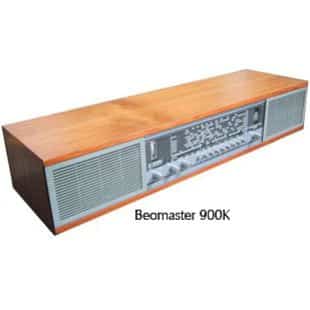
BeoMaster 900K
The first product of the new era was launched in 1964.
Beomaster 900 was a fully transistorised radio with FM stereo radio. It was even launched in a version with two built-in speakers – Beomaster 900K – making it clear to everyone that it contained two independent stereo loudspeakers. Bang & Olufsen wanted to design a product so unique that it would open the doors to distribution throughout Europe, in the same way as the “Five Lamper” had done in Denmark 30 years earlier .
Beomaster 900M
This version of the Beomaster 900 was developed specially for those who require a set for use with external speakers. Otherwise, the Beomaster 900M is identical with the Beomaster 900K. Dimensions: 146mm high, 404mm wide, 230mm deep. Choice of teak or Brazilian rosewood finish.” – taken form the Bang & Olufsen product catalogue 1967 – 68
The most remarkable aspect, however, was not in the technology, but in the design. Transistors, which are small compared to radio tubes, generate less heat. As they require less space to release heat, transistors allow for radically different cabinet designs. The architect and designer, Henning Moldenhawer, knew how to exploit this. He designed the world’s first low, flat radio cabinet, creating a radical innovation in the process. From practically one day to the next, the good old tube equipped radio had become obsolete.
Now it was transistors, not tubes, which for the first time would be powered from the mains. While the sound was improved, the loudspeakers also underwent significant changes, becoming more compact. After all, in those days, loudspeakers were foreign elements in the living-room. This was achieved with the pressure chamber loud speaker which reproduced sound of a quality which had, until then, only been possible with far bigger boxes. A long, low and fully transistorised mains radio, which played immediately – with no warm-up necessary, as was the case with the radio tubes – was an achievement in itself. In addition, the design concept challenged all established ideas for radio design. The new Beomaster 900 marked a revolution.
It was the architect Henning Moldenhawer who, for the first time in the history of radio, extended the front all the way out to the sides of the unit, breaking with the traditional framing of the front which all radios, TVs and loudspeakers had been using until then. This motif was retraced in Bang & Olufsen’s future design language. It was even repeated graphically in the company’s advertisements.
Beomaster 900 became a European-wide success. At the same time – and much to the company’s surprise – its share of the Danish market did not fall. On the contrary, it rose significantly – at a time when the last of the remaining Danish manufacturers went to the wall. Proof indeed that design is not only for connoisseurs, but is a universal language, at least when applied with talent and as an expression of the product’s conceptual content, i.e. making the product itself a communicator.
When, some years later, Bang & Olufsen explained its identity, this visually self-communicating aspect was dubbed ‘Autovisuality’.
Concept communication in terms of what the unit is and can do, communication between the unit and the user, but also identity communication between those who create the products and those who select and acquire them as well as between those who own the products.
” Beomaster 900K: This all-transistor mains-powered stereo radio will revolutionise your ideas about radio and was awarded the iF prize at the International Hanover Fair.
The Beomaster 900K is an all-transistor mains-powered stereo radio featuring a specially engineered highly-efficient dual-channel audio amplifier for reproduction of stereo gramophone records (delivers 2 x 5 watts of undistorted power output). It is prepared for single transmitter stereo broadcasts, having a B&O multiplex adaptor (stereo decoder). A Beo-Beacon pilot lamp lights up when the receiver is tuned to a station transmitting an FM stereo programme or when the receiver is switched to play stereo gramophone records or stereo tapes.
The Beomaster 900K has two B&O pressure-chamber speakers. Dimensions: 146mm high, 744mm wide, 230mm deep)
BeoMaster 900K Product Details
Type Numbers
Please let us know
Designer
Manufactured
1964 - 1970
Colour Options
Rosewood, Teak
BeoMaster 900K Product Specification
Please let us know
Gold or Silver membership required to view documents
Available documents are listed, if none are listed then please reach out to see if we have them.
BeoMaster 900K FAQs
Please let us know
BeoMaster 900 RG
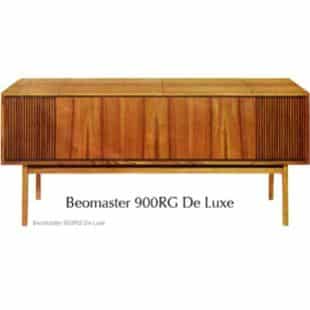
BeoMaster 900 RG
No other stereo radio gramophone with low, modern, yet reasonable dimensions is so beautifully styled as this. It incorporates a Beomaster 900 all-transistor stereo radio and the semi-professional Beogram 1000 stereo record player. There is space for installation of of tape recorder and a record and tape storage compartment. Pneumatically damped twin lids. Two B&O pressure-chamber speakers. 2 x 5 watts output. Dimensions: 585mm high, 1293mm wide, 510mm deep. Choice of teak or Brazilian rosewood finish. – taken from the 1967 – 1968 Bang & Olufsen product catalogue.
Radiogram Beomaster 900 RG Compact included a record player – either a B&O or Garrard auto-changer – within the combined unit.
Beomaster 900RG Compact was a high-quality radiogram and included the company’s first transistorised mains receiver – Beomaster 900. It was finished in either a natural teak or a rosewood veneer. It had two built-in stereo pressure chamber speakers rated at 85 Watts output. The transistorised circuitry included 26 transistors and four diodes. The radio section within the Beomaster 900 receiver had an internal FM antenna (an optional FM stereo decoder could be fitted). The receiver included an FM, MW, LW and SW radio, together with the Beogram 1000 record player. The space next to the turntable was for the storage of records, but if you had a Beocord 1500 or Beocord 2000 reel-to-reel tape recorder then the space was designed to allow this to be slotted in.
Controls: volume, bass, treble and tuning. Push button controls for on/off, gramophone, tape recorder, AFC circuitry, SW, LW, MW and FM wavebands. It had a ‘stereo’ indicator (optional module) and a tuner indicator.
Dimensions: (WxHxD):156.0cm x 68.5cm x 52.0cm
Weight: 54kg
BeoMaster 900 RG Product Details
Type Numbers
Please let us know
Designer
Please let us know
Manufactured
1968 - 1971
Colour Options
Rosewood, Teak
BeoMaster 900 RG Product Specification
Please let us know
Gold or Silver membership required to view documents
Available documents are listed, if none are listed then please reach out to see if we have them.
BeoMaster 900 RG FAQs
Please let us know
BeoMaster 901

BeoMaster 901
Tuning was by ways of a slider which moved smoothly along a clearly marked scale. An illuminated indicator and AFC (Automatic Frequency Control) circuit helped to make tuning easy and accurate. The MONO control button disconnected the built-in stereo decoder when correct stereo reception was impaired by bad weather conditions or other interference.
Beomaster 901’s large tuning scale had tuning facilities for FM, Long and Medium wave stations. The tuning slider had small thumbwheels to aid fine tuning. AFC locked the receiver to the desired station
The stereo amplifier had a powerful output of 2 x 20 watts RMS and special Darlington-coupled transistors in the output stages kept distortion to a minimum – less than 0,3% at full power. There were connections for two pairs of loudspeakers and a pair of headphones. Sockets were also provided for the connection of a tape recorder, a record-player and AM and FM aerials. Easy-to-use sliders controlled volume, balance, bass and treble and there were slim push-buttons for selecting waveband or tape or record input.
FM room aerial
In order to receive FM programmes, an FM aerial must be connected to the Beomaster 1001. Within a certain radius of the transmitter you could use the Bang & Olufsen FM room aerial, type 8902010. This aerial was easily fitted and the telescopic elements could be pulled out and positioned favourably.
Beomaster 901 could be made up as part of the Beosystem 901 including the the Beogram 1102 record player, Beocord 1101 cassette deck and 2 Beovox Uni-Phase S25 or P30 loudspeakers.
BeoMaster 901 Product Details
Type Numbers
2602 ( 1972 - Dec 1977)
Designer
Manufactured
1972 - 1977
Colour Options
Rosewood, Teak, Oak
BeoMaster 901 Product Specification
Power output: 2 x 20 watts/ 8 ohms, 2 x 19 watts/ 4 ohms
2 x 40 watts/ 8 ohms, 2 x 25 watts/ 4 ohms
Speaker Impedance: 4 ohms
Harmonic Distortion: < 0.1 %
Intermodulation: < 1.0 %
Frequency Response: 20 – 30,000 Hz
Signal-to-noise ratio: > 50 dB
Channel separation: > 50 dB
Bass control: +/- 17 dB
Treble control: +/- 14 dB
FM tuner range: 87.5 – 104 MHz
AM tuner range: 147 – 350 kHz, 520 – 1610 kHz
Power supply: 110 – 130 – 220 – 240 V, 50 – 60 Hz
Power consumption: 15 – 120 W
Dimensions W x H x D 7.5 x 50 x 22.8 cm
Weight 5.5 kg
Connections: Tape DIN
Phono DIN
Speakers 1 set
Gold or Silver membership required to view documents
Available documents are listed, if none are listed then please reach out to see if we have them.
BeoMaster 901 FAQs
Please let us know
